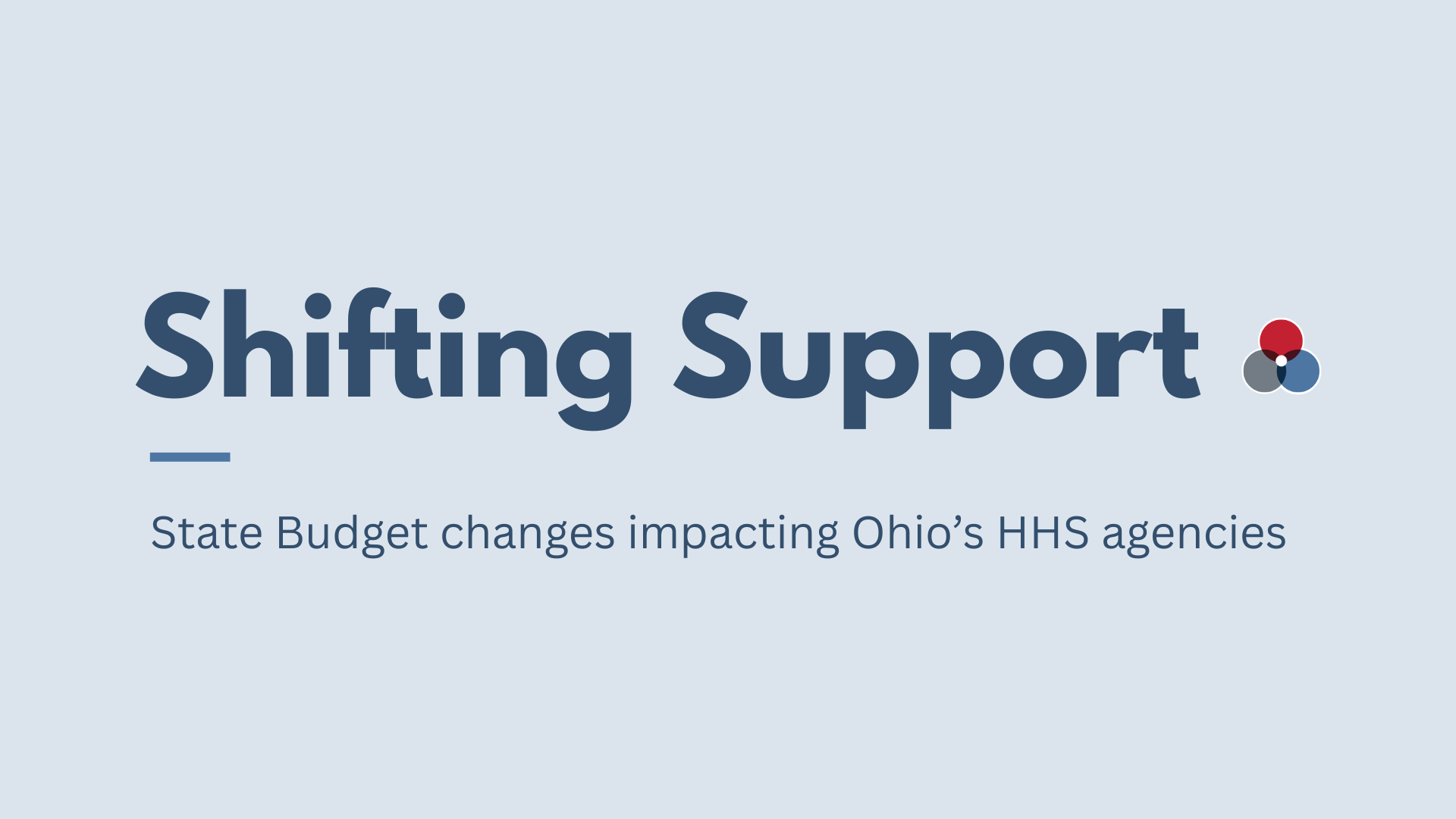INTRODUCTION
Time is money. This cliché is a cliché because the lens of time as an economic analytical tool is not new or unexplored territory. Time has a value, intrinsically and in very real financial terms, and is a key measurement in analyzing the effectiveness of decisions around resources. In most healthcare reimbursement schemes, including Medicaid, time is a key evaluative component of cost because health insurance is ultimately a function of time-based statistics.Risk, in insurance terms, is the likelihood of paying for an event within a given timeframe, for a given population, at a specific cost. For example, if one belongs to an insurance group of individuals who go skydiving, their risk may be higher than a person in a group with no desire to skydive. This is because it is more likely that a costly injury may occur with the skydiving group given a long enough timeline. This reductive and purely illustrative example helps us, then, to think about insurance costs as a function of time and behavior.
Transportation policy can impact how health is delivered and how costs are developed.
As in the healthcare delivery system, transportation is also fundamentally about time. Transportation on its own can affect a person’s ability to make medical appointments, to become economically mobile and, in some cases, affect health directly (walking versus driving). In other ways, transportation policy can impact how health is delivered and how costs are developed. The conditions of how we get from point A to point B influence outcomes like asthma, infant mortality, obesity, accidental death, behavioral health and economic mobility.In Medicaid, which is an insurance product, cost control is all about engineering behavior on the beneficiary and provider levels. Payments have to happen within a certain time frame, payments to providers are reconfigured along certain time-based standards, therapies are limited to certain periods, eligibility only lasts for so long, etc. Controlling costs, then, is defined by those policy choices which reduce the likelihood of more expensive and ineffective events from occurring and looking at what drives the frequency of those events (again, statistics).
Controlling costs is defined by those policy choices which reduce the likelihood of more expensive and ineffective events from occurring and looking at what drives the frequency of those events
Drivers of cost in Medicaid, and the delivery system writ large, are habitually defined as medically-oriented interventions. In this approach, for example, the problem of cost requires a policy solution that looks at the well-reimbursed diabetic amputations versus the lower-reimbursed nutrition counseling for someone who is pre-diabetic. However, other, “non-medical” policy questions are being asked. Why does someone have diabetes in the first place? How has food insecurity affected this person’s nutrition choice? What is the role of the insurer and the provider in this scenario? What role does culture play? In other words, what are the social determinants of this person’s health?In this, the last installment of the Center for Medicaid Policy’s series of issue briefs looking at the intersection of Medicaid and social determinants, we explore the role of transportation as a social determinant of access, cost and outcomes. This brief will examine the current system of medically-based transportation, transportation as a public health concern and the role non-health related policy plays in affecting health.
KEY TAKEAWAYS
- Transportation has a long history as a benefit in Medicaid that is a critical resource for the elderly and disabled populations
- Infrastructure policies centered on car ownership and sprawl have deepened poverty and created numerous public health challenges
- The state of Ohio does not support public transit and there are a number of potential options that would improve services across the state
- By improving access to public transit, Ohio would not only improve the poor economic conditions created by sprawl, but would also facilitate better population health
TRANSPORTATION AS A MEDICAID BENEFITNon-Emergency Medical Transportation
Transportation for emergency medical events is a federally required benefit in Medicaid programs.[1]According to a recent survey of Medicaid adults with disabilities by the federal government, lack of transportation was identified as the third greatest barrier to care.[2] This is not only true for Americans with disabilities, however, as a 2005 National Academy of Sciences study suggests, nearly 4 million people miss or delay non-emergency medical care due to transportation.[3] That study also suggests that non-emergency medical transportation was found to be cost-effective when addressing the 12 most common non-emergent medical conditions.Non-emergency medical transportation (NEMT) is also required, though the design of these services varies from state to state and may be affected by Home and Community Based Services (HCBS) waivers. NEMT in Ohio is defined has two references in the Ohio Administrative Code (OAC). The first OAC section 173-39-02.13 defines NEMT as “a service that transports a consumer from one place to another for a non-emergency medical purpose through the use of a provider’s vehicle and driver.” There is also a concurrent definition of NEMT in OAC 173-39-02.18 that allows for transportation for a non-medical purpose such as transportation to a grocery store, senior center, etc. In both cases, the provider is ultimately responsible for ensuring the access to the service meets the state standards of appropriateness of service provision, and that there are requirements regarding driver licensure, vehicle inspection, and regular reporting standards.
Transportation for emergency medical events is a federally required benefit in Medicaid programs.
In the last state biennial budget, the state sought to change the way NEMT operated. In the existing system, which is still in place, County Departments of Job and Family Services (CDsJFS) were responsible for coordinating NEMT.[4] Many of the individuals who access these county-based services are doing it to satisfy their treatment needs. For example, based on data from Cuyahoga County’s JFS Department, there were nearly 646 individuals in May 2018 who accessed NEMT, with 53 percent using it for chemotherapy, dialysis and radiation while the remainder of the clients accessed Medication Assisted Therapies for opioid and heroin addiction. It’s important to note, however, that the majority of trips associated with these clients was for the addiction-based services, accounting for 72 percent of the more than 18,000 total trips made.The state’s proposal identified an issue with this county-based system citing geographic and logistical limitations of a de-centralized service, and wanted to shift to a “brokerage” service which would be responsible for managing a provider network, maintaining the regulatory standards and addressing issues of cost effectiveness. This change would also allow the state to claim a higher federal medical assistance percentage (FMAP) for delivering this service as a state-level Medicaid benefit as opposed to the current rate of 50 percent as a county administrative activity. Advocates, however, raised concerns with the state’s proposal, citing issues with local control and the standardization of rates regardless of medical need.[5]Some highlighted the disparity in resources and income levels between urban and rural communities, with rural communities having fewer resources and more poverty than areas with more complex and numerous transportation options. There were also concerns that a managed, centrally administered service may not be as responsive to the immediate needs of the population.
Nearly 4 million people miss or delay non-emergency medical care due to transportation
As of the writing of this paper, Ohio is conducting outreach regarding this change and had delayed implementation. This delay has been supported by county departments. It is worthy to note that some states that have implemented a centralized system such as the one proposed by Ohio have faced consumer complaints about issues of access and availability.[6] Additionally, some states have decided to pursue waivers to eliminate this benefit altogether, a policy concept that is actively promoted by the Trump administration.[7]
The Elderly and the Disabled
Some of the primary beneficiaries of transportation for medical, and medically-adjacent services, are the aging and disabled populations. The developmentally disabled (DD) delivery system, in particular, has faced a number of changes in recent years and is currently going through significant transition, which Community Solutions has written about extensively.[8] These changes are, in part, driven by federally-developed rules which require local County Boards of Developmental Disabilities to no longer act as providers, and instead transition to a contractor role. The elderly, the disabled, and the elderly disabled, also rely on transportation for the medical needs, leveraging local, state and federal dollars to access services.
Some of the primary beneficiaries of transportation for medical, and medically-adjacent services, are the aging and disabled populations.
Currently, reimbursement for DD clients is only provided during the actual transportation of the individual requiring the service. This means that there is little incentive for providers to offer longer trips to riders since they will only be paid for the portion where they have a rider and not the return trip. Also, these services are often supplemented by local levy dollars and these dollars do not typically reimburse for the transport to cross county lines. This means the employment and medical service opportunities for individuals needing NEMT may be more limited due to availability of willing providers. This is issue is exacerbated in rural areas that have less infrastructure and fewer levy-based resources.
The employment and medical service opportunities for individuals needing NEMT may be more limited due to availability of willing providers.
In 2017, the Ohio Colleges of Medicine Government Resource Center (GRC) contracted with the Ohio Developmental Disabilities Council (DD Council) to produce a document entitled Transportation Challenges for Ohioans with Disabilities. In this survey-based report, a number of transportation barriers for individuals with disabilities were identified, including issues with access, availability, budgetary pressures and documentation requirements.[9] To address these issues, GRC and the DD Council made the following policy recommendations:
- Reimbursement mechanisms were complex, particularly the regulations separating out the different types of NEMT and should be simplified
- Provider and rider communication is poor and unpredictable and should be improved
- Coordination across agencies would improve the customer service experience and improve data
- On-demand transportation options should be developed
While these proposals seem to suggest a centralized system, such as the one proposed by the state, many of these recommendations, local control and the roles of county-based entities is a key element of design that would need to be addressed.Beyond these state-based financial arrangements for the disabled, there are also flexible federal “Title III B” dollars made available through the Older Americans Act (OAA). There are more than 25 authorized services that local agencies can bill through this program, though transportation, including transportation of meals, is most often used. To access OAA dollars, which have not increased since federal fiscal year 2004, states must submit plans to the federal government in conjunction with Area Agencies on Aging, a process under the OAC purview of the Ohio Department of Aging. [10], [11]Beyond these OAA resources, the Ohio Department of Transportation is also required to have a Mobility Management Program as a part of funding associated with the Elderly Individuals with Disabilities Program. The state must derive its projects from a coordinated transportation plan, which is regionally developed, and must include a process that involves seniors, individuals with disabilities and transportation professionals. This is in addition to a number of regulatory requirements regarding local match, Americans with Disabilities Act (ADA) requirements and various certifications.[12]
To access OAA dollars, which have not increased since federal fiscal year 2004, states must submit plans to the federal government in conjunction with Area Agencies on Aging.
While the sources of funding are complex, multi-leveled and inclusive of input on the consumer and local levels, the need for these services remains high and will likely grow as Ohio’s elderly population increases. Additionally, whether it is medically-related or not, evidence-based research suggests that transportation is a significant barrier in regards to healthcare access and, ultimately, to outcomes.[13]
TRANSPORTATION AS A PUBLIC HEALTH ISSUE
Nationally, opioids claimed 49,000 lives in 2017. By comparison, 37,000 people were killed due to motor vehicle accidentsin 2016, 7,000 of whom were non-motorists including pedestrians and cyclists.[14] While this may be the most apparent public health dynamic of the transportation system, it is not the only dimension influencing mortality and morbidity.
Access to Economic Opportunity
A 2015 report from Brookings showed that the physical distance between people and major job centers has been growing.[15] In Ohio’s major metropolitan statistical areas (MSAs), this shift is pronounced, with a particularly negative impact on high-poverty and majority-minority neighborhoods.
Table 1: Change in number of jobs near the average resident: 2000-2012

A few notes specific to Ohio:
- Dayton ranked last (96 out of 96, nationally), on number of jobs available to the average resident in high poverty neighborhoods.
- Cleveland ranked last on number of jobs near the average resident
A 2015 Federal Reserve Bank of Cleveland (Federal Reserve) report on the intersection of job access and public transportation gives some insight as to the challenges associated with Cleveland’s ranking as the least job/resident connected MSA and that issue’s relationship to poverty. First, jobs in the region are least accessible for workers with limited education and who work low wage jobs.[16] Second, while there is the densest concentration of jobs anywhere in the state in metropolitan areas and many transportation options for individuals, reliance on cars is the primary transportation option. This is particularly noteworthy as cars, as an asset, are severely underutilized, with 95 percent of their usable lives parked and the majority of the space they occupy often unused, or leveraged, by a single occupant.[17]With the economic system designed with a preference for auto transportation at its center, opportunities for individuals who may have limited access to automobiles is diminished. These numbers are consistent with Ohio Labor Market Information which shows a correlation between higher income earners and the likelihood of a longer, more distant commute.[18] In other words, our current transportation system is designed and governmentally supported in ways that accommodate the residential needs and preferences of higher income earners while exploiting the infrastructural advantages of urban employment centers, often to the detriment of lower wage, less educated individuals. Looking at census data regarding the commute times of some of the larger MSAs in Ohio, we see how car ownership and use is prioritized over public transit:[19]
Table 2: Average Metro Area Commute Time

It is important to note too, that there is also an emerging telecommuting trend in the United States, with telecommuting actually surpassing public transit use for the first time in U.S. history.[20] This too may exacerbate the differences between higher income individuals and others. Lower wage earners who live both in and outside of cities, have less access to reliable, high speed internet. In the city of Cleveland alone, 46.82 percent of residents have no broadband access, and 31.88 have no internet whatsoever.[21]
Sprawl as a Disease State
As the data from Brookings and the Federal Reserve show, the issue of disconnectedness with employment and where a person lives can act as a barrier to economic self-sufficiency. This barrier, however, has a more recent and problematic history rooted in race-based public policy practices.
In the city of Cleveland alone, 46.82 percent of residents have no broadband access, and 31.88 have no internet whatsoever.
In the early part of the 20th century, around the same time as the growth of suburbs, the practice of racially-based expulsive and exclusionary zoning prevented populations from living in certain communities.This was articulated further in the 1930s through the use of “redlining;” a process to evaluate geographic areas for the purpose of real estate lending.[22] Concurrent with the practices, the creation of the Federal Housing Administration (FHA), the GI Bill of 1944 and the Federal Highway Act of 1953 all led to the conditions that simultaneously built out the suburbs and intentionally dismantled public transit systems in favor of cars. A 1947 underwriting manual published by the FHA did not obfuscate the goals of these efforts in lending, stating that stable neighborhoods “must be occupied by the same social and racial classes.”
The data shows this infrastructure policy has a pronounced and disparately negative effect in the public health outcomes for African-Americans we see today.
The data shows this infrastructure policy has a pronounced and disparately negative effect in the public health outcomes for African-Americans we see today. Again, looking at the City of Cleveland, where we saw redlining, we see higher rates of untreated mental illness, trauma, abuse, substance use disorders, job loss, homelessness, higher rates of infant mortality, higher rates of diabetes, greater lead paint exposure, shorter life expectancy and increased asthma.[23] However, the public health consequences are not limited to African-Americans.Looking at the general impact of sprawl, there is evidence to suggest that there are a myriad of negative effects on the environment that impact individual and population-based health outcomes. Specifically, air quality is significantly impacted by the over-reliance on automobiles encouraged by sprawl and has been associated with worse lung function, asthma, hospitalization for infants and the elderly, chronic obstructive pulmonary disease, heart attacks and stroke.[24]
Public transportation then can play a key role in addressing the ways individuals overcome the economic trappings, negative health and detrimental environmental effects caused by sprawl.
To explain, one dangerous type of air pollutant is particulate matter that is 2.5 micrometers in size, known as PM2.5. A type of PM2.5 is produced by automobile combustion and, statistically, 22 micrograms of this type of PM2.5 is the equivalent of smoking one cigarette. In northeast Ohio, the annual average of secondary PM2.5 is 15 micrograms per day, meaning individuals in the region are inhaling the equivalent of 249 cigarettes per year. Research from the Northeast Ohio Areawide Coordinating Agency (NOACA) suggests that traffic-related air pollution (TRAP) can be particularly harmful because it is not only more proximate to individuals, (since roads are closer to where people live), but also because this type of PM2.5 can be significantly more harmful than other types of PM2.5. [25]In addition to the air quality issues that automobile pollution can cause, as well as the inherent risk associated with accidental death from vehicular injury, sprawl is associated with greater rates of obesity due to decreased physical activity, worse water quality, increased urban heat, and negative impacts on mental health for drivers.[26][27]Public transportation then can play a key role in addressing the ways individuals overcome the economic trappings, negative health and detrimental environmental effects caused by sprawl.
THE ROLE OF PUBLIC TRANSIT IN ADDRESSING HEALTH OUTCOMES AND COST
The state-based funding for transit in Ohio is one of the lowest in the nation and, just looking within the state, is at one of its lowest levels in nearly 40 years. According to a recent Transit Needs Study conducted by the Ohio Department of Transportation (ODOT), as of 2012, state general revenue represented less than 1 percent of the overall transit spending in Ohio for its 28 urban and 33 rural transit systems, equaling $7.3 million of the $893 million spent.[28]
In order for the transit system in Ohio to adequately meet its future needs, total funding from the state would have to increase to 10 percent and the entire investment would have to nearly double to $1.8 billion by 2025.
This report noted, however, than in order for the transit system in Ohio to adequately meet its future needs, total funding from the state would have to increase to 10 percent and the entire investment would have to nearly double to $1.8 billion by 2025. Recently, the Greater Ohio Policy Center (GOPC) developed a whitepaper on how to better finance transit in Ohio, taking input from a number of regional planning, transit and chamber of commerce organizations across the state.[29] In this document, which mirrors many of the recommendations of ODOT’s Transit Needs Study, GOPC identified three main strategies for increasing funding, including increasing the use of flexible funds from the Federal Highway Administration, broadening the state sales tax to include parking, and ending the out of state auto sales tax exemption.While it remains to be seen if the legislature will adopt or consider any of these proposals, there is a potential for considerable health and economic benefits. In terms of health, a 2016 statistical review of 148 cities in the US showed that increased transportation options and decreased single occupancy vehicle use was directly correlated with improved health outcomes and quality of life.[30] Most notably, recent research from Harvard focused on upward economic mobility has shown that commute time is the single strongest predictor of a family’s ability to escape poverty. In fact, this single variable has a stronger relationship to poverty than crime, elementary school test scores or the percentage of two-parent families in a community.[31]
Commute time is the single strongest predictor of a family’s ability to escape poverty.
CONCLUSION
Medicaid is an insurance program the design of which has concentrated on eligibility and medically-oriented policy interventions as a means to control costs and improve outcomes. While these efforts are appropriate and necessary, policymakers would be well advised to apply broader, systems-based thinking in their approaches to addressing these issues. If Medicaid policy is ultimately an effort to manage the risk associated with spending, understanding what drives the risk in the program is paramount.
As an income-based entitlement, poverty is inextricably linked to Medicaid in explicit and subtle ways.
As an income-based entitlement, poverty is inextricably linked to Medicaid in explicit and subtle ways. To be blunt, it is a data-driven reality that the historical policy choices tied to infrastructure have manufactured many of the conditions for endemic poverty to persist in urban and rural areas across the country.The history of these choices have not only segregated people along the lines of race and income, but also health outcomes.
The state of Ohio needs to better manage its current resources in Medicaid to address the needs of some of the most vulnerable populations who rely on its coverage.
The state of Ohio needs to better manage its current resources in Medicaid to address the needs of some of the most vulnerable populations who rely on its coverage. However, the state should also understand and invest in those transportation solutions that create the best opportunities for individuals to progress economically. Right now, the majority of the state’s investments center on largely empty, static, depreciating assets in cars and car-oriented infrastructure. It would make better financial sense, and be a better cost management policy, to support public transit. By doing so, Ohio will refocus its transportation policy on the public health conditions of communities in Ohio and enable individuals to exploit the one resource vital to their success financially and in terms of their health: time.[cmsmasters_divider shortcode_id="9bmxd8j0pa" width="long" height="1" position="center" margin_top="50" margin_bottom="50" animation_delay="0"][cmsmasters_text][1] "Let Medicaid Give You a Ride." April 2016. Accessed October 2018. https://www.cms.gov/medicare-medicaid-coordination/fraud-prevention/medicaid-integrity-education/downloads/nemt-factsheet.pdf.[2] Aleccia, Jonel. "No Car, No Care? Medicaid Transport Program Faces Cuts In Some States." January 27, 2018. Accessed October 09, 2018. https://www.npr.org/sections/health-shots/2018/01/27/581055275/no-car-no-care-medicaid-transport-program-faces-cuts-in-some-states.[3] Wallace, Richard, Paul Hughes-Cromwick, Hilary Mull, and Shehamay Khasnabis. "Access to Health Care and Nonemergency Medical Transportation: Two Missing Links." 2005. Accessed October 2018. https://trrjournalonline.trb.org/doi/abs/10.3141/1924-10.[4] LSC Analysis of Executive Budget: The Department of Medicaid. March 2017. Accessed June 2018. https://www.lsc.ohio.gov/documents/budget/132/MainOperating/redbook/MCD.PDF.[5] Lane, Mary Beth. "Advocates Worry Proposed Medicaid Change Will Hinder Travel to Medical Appointments." February 16, 2018. Accessed October 04, 2018. https://www.the-review.com/news/20180216/advocates-worry-proposed-medicaid-change-will-hinder-travel-to-medical-appointments.[6] Rigg, Mackenzie. "Medicaid Transportation Contractor Improving, but Complaints Continue." The CT Mirror. September 12, 2018. Accessed October 09, 2018. https://ctmirror.org/2018/09/12/medicaid-transportation-contractor-improving-complaints-continue/.[7] Abraham, Tony. "Medicaid Waivers Put Transport Benefits on Chopping Block." Healthcare Dive. September 07, 2018. Accessed October 09, 2018. https://www.healthcaredive.com/news/medicaid-waivers-put-transport-benefits-on-chopping-block/531427/.[8] Frech, Rose. "Ohio at a Crossroads: Three Years Later, an Update on the State's Developmental Disabilities System." The Center for Community Solutions. July 2018. Accessed September 2018. https://www.communitysolutions.com/research/ohio-crossroads-three-years-later-update-states-developmental-disabilities-system/.[9] Tumin, Rachel, PhD. "Transportation Challenges for Ohioans with Disabilities." July 2017. Accessed September 2018. http://ddc.ohio.gov/Portals/0/transportation-challenges-7-17.pdf.[10] "Older Americans Act." Profile of Older Americans | ACL Administration for Community Living. Accessed July 2018. https://www.acl.gov/about-acl/authorizing-statutes/older-americans-act.[11] "Ohio State Plan on Aging." 2015. Accessed September 2018. https://aging.ohio.gov/Portals/0/PDF/State_Plan_15-18.pdf?pdf=State_Plan_15-18.[12] "Locally Developed, Coordinated Public Transit-Human Services Transportation Planning Guidance." May 2017. Accessed October 2018. http://www.dot.state.oh.us/Divisions/Planning/Transit/Documents/Coordinated Plan 2017/Coordinated Transportation Plan Template Guidance FINAL.pdf.[13] Syed, Samina T., Ben S. Gerber, and Lisa K. Sharp. Traveling Towards Disease: Transportation Barriers to Health Care Access. October 2013. Accessed October 2018. https://www.ncbi.nlm.nih.gov/pmc/articles/PMC4265215/.[14] "National Statistics on Motor Vehicle Fatalities." Accessed August 2018. https://www-fars.nhtsa.dot.gov/Main/index.aspx.[15] Kneebone, Elizabeth, and Natalie Holmes. "The Growing Distance between People and Jobs in Metropolitan America." August 2016. Accessed October 2018. https://www.brookings.edu/research/the-growing-distance-between-people-and-jobs-in-metropolitan-america/.[16] "A Long Ride to Work: Job Access and Public Transportation in Northeast Ohio." November 2015. Accessed October 2018. https://www.clevelandfed.org/newsroom-and-events/publications/a-look-behind-the-numbers/albtn-20151123-a-long-ride-to-work-job-access-and-public-transportation-in-northeast-ohio.aspx.[17] Barter, Paul. ""Cars Are Parked 95% of the Time". Let's Check!" August 2018. Accessed October 2018. https://www.reinventingparking.org/2013/02/cars-are-parked-95-of-time-lets-check.html.[18] "2015 Inflow and Outflow Report, All Jobs." 2016. Accessed July 2018. http://ohiolmi.com/census/Cuyahoga_InflowOutflow.pdf.[19] Maciag, Mike. "Riding Transit Takes Almost Twice as Long as Driving." February 2017. Accessed October 2018. http://www.governing.com/topics/transportation-infrastructure/gov-transit-driving-times.html.[20] Maciag, Mike. "More Americans Now Telecommute Than Take Public Transportation to Work." September 2018. Accessed October 2018. http://www.governing.com/topics/transportation-infrastructure/gov-workers-telework-public-transportation-commute.html.[21] Trubek, Anne. "On the Wrong Side of the Digital Divide in Cleveland, OH." Belt Magazine. August 2018. Accessed October 2018. http://beltmag.com/wrong-side-digital-divide/.[22] Martin, Matt, Joshua Bates, Amanda Golden, Kelsey Mailman, and Ronni Nimps. "The History of Race and Real Estate in Cleveland & Its Relationship to Health Equity Today." April 2014. Accessed August 2018. https://docs.google.com/file/d/0B7CzfHd6PLiXR2VYNDFNV2EwclE/edit.[23] Ibid.[24] Stone, Brian, Jr. "Urban Sprawl and Air Quality in Large US Cities." December 2006. Accessed July 2018. http://urbanclimate.gatech.edu/pubs/Urban Sprawl and AQ_Stone2.pdf.[25] Kovach, Tim. "2017 Air Quality Trends Report." December 2017. Accessed June 2018. http://www.noaca.org/modules/showdocument.aspx?documentid=21968.[26] Frumkin, Howard, MD, PhD. "Urban Sprawl and Public Health." May/June 2002. Accessed September 2018. https://www.ncbi.nlm.nih.gov/pmc/articles/PMC1497432/pdf/12432132.pdf.[27] Ewing, Reid, Gail Meakins, Shima Hamidi, and Arthur C. Nelson. "Relationship between Urban Sprawl and Physical Activity, Obesity, and Morbidity – Update and Refinement." Science Direct. December 2013. Accessed October 2018. https://www.sciencedirect.com/science/article/pii/S135382921300172X?via=ihub.[28] "Ohio Transit Needs Study." February 2015. Accessed June 2018. http://www.dot.state.oh.us/Divisions/Planning/Transit/TransitNeedsStudy/Documents/OhioStatewideTransitNeedsStudyFinalReport.pdf.[29] "Fueling Innovation in Transit: Potential Funding Options for Public Transit." September 2018. Accessed October 2018. https://static1.squarespace.com/static/59396fee59cc6877bacf5ab5/t/5ba40880f4e1fcaeb4a2c866/1537476746952/Transit Funding Book FINAL.pdf.[30] Frederick, Chad, William Riggs, and John Hans Gilderbloom. "Commute Mode Diversity and Public Health: A Multivariate Analysis of 148 US Cities." June 2017. Accessed September 2018. https://www.tandfonline.com/doi/full/10.1080/15568318.2017.1321705.[31] Bouchard, Mikayla. "Transportation Emerges as Crucial to Escaping Poverty." May 2015. Accessed October 2018. https://www.nytimes.com/2015/05/07/upshot/transportation-emerges-as-crucial-to-escaping-poverty.html.[/cmsmasters_text][/cmsmasters_column][/cmsmasters_row]


.png)





